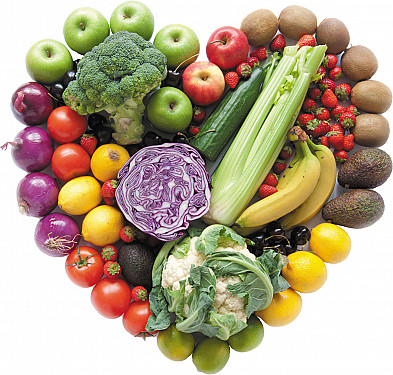The 10 rules of a heart-healthy diet
Eating a healthy diet is a cornerstone of treating and preventing heart disease. That’s easy to understand, but sometimes hard to implement. There’s no one-size-fits-all eating plan that will work for everyone. With that in mind, the American Heart Association updated its dietary guidelines for the first time in 15 years. Rather than listing dos and don’ts of specific nutrients (such as protein or fat), the new guidelines — published online Nov. 2, 2021, by Circulation — focus on healthy eating patterns. As long as you stay within the following rules, you can tailor a heart-healthy diet to your tastes and needs.
1.Balance your calorie intake with physical activity. Weight gain is a risk factor for cardiovascular disease, and taking in more calories than you burn off leads to weight gain. Talk to a dietitian to find out how many calories you need to eat considering how active you are. It may only require a few tweaks to your diet to have the calories you eat balance the calories you burn during activity. “Maybe you need to reduce fast food and make room for nutritious foods. Or maybe your portions are too large. For instance, your salad might include a cup of beans when a quarter-cup is more appropriate,” says Liz Moore, a registered dietitian at Harvard-affiliated Beth Israel Deaconess Medical Center.
2. Eat a variety of fruits and vegetables. Consuming a rainbow of colorful fruits and vegetables (which are full of nutrients and many types of beneficial plant molecules) is linked to a reduced risk of cardiovascular disease and early death, the guidelines point out. You should get at least five servings per day. Moore says the produce doesn’t have to be fresh; it can be frozen or canned. “I prefer frozen, because canned foods have added salt. But you can reduce salt by rinsing canned vegetables.”
3. Choose whole-grain foods and products. The guidelines stress the importance of eating whole grains (like whole-wheat bread or brown rice) over refined grains (such as white bread or white rice). That’s because eating whole grains every day is linked to a reduced risk for cardiovascular disease, heart attack, stroke, and diabetes. “Keep it interesting by trying whole grains that are new to you, such as quinoa, buckwheat, or wild rice. They have B vitamins and protein, and they’re not hard to find in most stores,” Moore says.
4. Choose healthy proteins. The guidelines suggest eating mostly plant-based proteins, such as nuts or legumes (beans, lentils), along with two to three servings of fish per week. They’re all associated with lower cardiovascular disease risks. And while it’s still debated, the new guidelines recommend replacing full-fat dairy products with low-fat dairy (such as milk or yogurt) for better heart health. If you want meat or poultry, the guidelines urge eating only low-fat cuts and staying away from processed meats of any kind. How much protein do you need? “Don’t worry about reaching a number,” Moore advises. “Just include protein in every meal, whether it’s beans, fish, or low-fat cheese.”
5. Use liquid plant oils instead of tropical oils. The cardiovascular benefits of unsaturated fats from plant oils (like olive, canola, or safflower oil) are especially effective when they replace saturated fats, such as those in red meat and tropical oils (like coconut or palm oil), according to the guidelines.
That’s not a license to drown foods in plant-based oil; oils are still fats, and fat contains twice as many calories per gram as does protein or carbohydrate. The right amount for you depends on your calorie goals.
6. Choose minimally processed foods. The guidelines note that eating ultra-processed foods (which are loaded with salt, added sugar, fat, and preservatives) is tied to an increased risk for obesity, diabetes, heart disease, and death from any cause. So as much as you can, avoid processed meats, frozen meals, ready-made baked goods, chips, and other processed foods. Instead, opt for whole foods that haven’t been processed and packaged to survive on a shelf for long periods.
7. Minimize your intake of foods and drinks with added sugars. Consuming sugary foods and drinks has consistently been associated with elevated risks for diabetes, cardiovascular disease, and weight gain, the guidelines report.
Scan Nutrition Facts labels for “added sugars” or look for added sugars in the ingredients list (search for names such as glucose, dextrose, sucrose, corn syrup, honey, maple syrup, or concentrated fruit juice). Try to keep them out of your diet as much as possible.
8. Choose or prepare foods with little or no salt. The guidelines warn that eating too much salt may increase blood pressure, which is a risk factor for heart attack and stroke. Extra-salty foods include restaurant fare and processed foods. But salt hides even in salad dressing and whole-wheat bread.
Read food labels carefully to check sodium (salt) levels, and keep your intake below 2,300 milligrams (mg) per day.
9. Limit alcohol consumption; if you don’t drink, don’t start. Drinking too much alcohol increases the risk for stroke and dangerous irregular heartbeats, the guidelines warn. Limit yourself to no more than one drink per day if you’re a woman and two drinks per day if you’re a man.
10. Use these guidelines wherever you dine. Apply the guidelines to meals you eat in any setting. How does that work if you’re at a friend’s house or restaurant? “It may be fun, but it’s not a free-for-all. You still need to watch your portions,” Moore says. “And minimize sauces or ask for them on the side. They’re often sources of salt, sugar, and fat. But don’t beat yourself up if you break the rules once in a while. Just do a better job at your next meal. Your heart is counting on you.”
